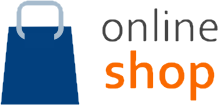When Benjamin Franklin (1706-1790) composed his Autobiography, he included the description of a self-improvement method that he had devised in his younger years, along with an honest assessment of his varied success in applying it to his conduct throughout his life.
Franklin’s method centred on thirteen behavioural traits – temperance, silence, order, resolution, frugality, industry, sincerity, justice, moderation, cleanliness, tranquillity, chastity, and humility – each of which, in succession, was allotted a week of close attention and reflection.
Progress and setbacks in mastering the traits were tracked daily in a grid chart, which had the seven days of the week running horizontally and the thirteen traits running vertically.
After thirteen weeks, Franklin began the cycle again, so that over the course of a year each behavioural trait could be carefully worked on for four weeks.

Franklin’s Method – Temperance
IMAGE CREDIT: supplied by author
He began devising this self-improvement method in his twenties, and had originally intended to devote a book to its elaboration.
In the Autobiography Franklin laments that due to his many other concerns over the years he never accomplished this task:
‘I should have called my BOOK the ART of Virtue…But it so happened that my Intention of writing & publishing this Comment was never fulfilled…the necessary close Attention to private Business in the earlier part of Life, and public Business since, have occasioned my postponing it.’
Producing this book was part of ‘a great and extensive Project’ envisioned by Franklin: the formation of an international secret fraternity and mutual-aid society, ‘the Society of the Free and Easy’.
Its initiates were to profess a belief in a generic religious creed, so that people of all religions would be able to join and were to follow ‘the Thirteen Weeks Examination and Practice of the Virtues’.
In Franklin’s plan, the society’s worldwide members would comprise a ‘united Party for Virtue’:
‘My Ideas at that time were, that the Sect should be begun & spread at first among young and single Men only…[and] that the existence of such a Society should be kept a Secret till it was to become considerable, to prevent Solicitations for the Admission of improper Persons.’
Franklin had an affinity for exclusive, men-only groups, and enjoyed fraternities and secret societies.
In 1727, when he was twenty-one, he co-founded the Junto, a Philadelphia-based discussion and mutual aid society limited to twelve male members.
He joined the Masonic fraternity in 1731, and soon began making plans to create the Party for Virtue, as well as plans to compose a book on virtue for use by young people and the party’s prospective members.
As Norman Fiering notes in his ‘Benjamin Franklin and the Way to Virtue’ (1978), Franklin’s projected worldwide fraternity easily calls the Masonic fraternity to mind.
Freemasonry may have been the model for his Society of the Free and Easy, which was meant to be much larger than the Junto and to have a global impact.
Franklin’s vigorous participation in the Masonic fraternity – he was elected Grand Master of Pennsylvania in 1734, just a few years after becoming a Freemason – may also have been a factor in the project’s prolonged postponement, though, as Freemasonry already satisfied some of the same functions as the new society he hoped to form.
Gordon Wood suggests in The Americanization of Benjamin Franklin (2004) that the busy young man ‘discovered just the organization he was looking for’ in Freemasonry and did not have a pressing need to create a new one.
Nonetheless, the fact that Franklin wished to found a new Masonic-like fraternity that would be open to members of all faiths and promote virtue across the globe also indicates that, at least to some degree, he did not consider Freemasonry to be sufficiently capable of fulfilling such a role.
In the end, Franklin neither wrote his book on, nor formed his fraternity for, virtue.
However, nearly twenty years after Franklin’s death, and half way across the world from Philadelphia, the early Eastern European maskil (Jewish enlightener) Rabbi Menachem Mendel Lefin [also Menahem Mendel Levin] of Satanów (1749-1826), succeeded in completing and publishing a Hebrew text based on Franklin’s self-improvement method.
Its purpose may have surprised Franklin, for instead of this being a work for the use of the ‘Virtuous and good Men of all Nations’, whom Franklin had envisioned as the members of his party, Lefin’s 1808 Sefer Heshbon HaNefesh (Book of Spiritual Accounting) was written specifically for the moral and spiritual edification of his fellow Jews.
Although Lefin stated outright in Spiritual Accounting (which was first published anonymously) that its innovative method was not his own discovery, he did not name Franklin or cite the Autobiography there, simply writing that:
‘a few years ago a new technique was discovered, and it is a wonderful invention in this task [of character-improvement], and it seems this innovation will spread quickly, God willing, as with the invention of the printing press, which brought light to the world’.

Franklin’s Method – Spiritual Accounting
IMAGE CREDIT: supplied by author
Jewish scholars who have discussed this (including Hillel Levine, Immanuel Etkes, and David Shahar) have generally viewed it as a deliberate omission on Lefin’s part.
Whether or not Lefin was purposely obscure, however, Franklin’s influence was not entirely unknown in Lefin’s day, as is evident from an 1815 Hebrew letter written by the prominent Jewish enlightener Jacob Samuel Bick, who described Spiritual Accounting’s self-improvement method as:
A wonderful technique invented by the sage Benjamin Franklin from the city of Philadelphia in North America. This scholar is renowned in all corners of the earth…Thus R[abbi] Mendel has prepared a delicacy for his nation…and taught a simple and clear solution for the broken but still precious soul to speedily return from the bad to the good. In their approbation, the rabbis of the generation said that this thing is beneficial and new. And the [Jewish] nation replied in turn: Sanctified! Sanctified!
Even so, Lefin’s omission of Franklin’s name in Spiritual Accounting resulted in eventual widespread Jewish forgetting of the fact that Franklin had originated its method.
The Hebrew-English edition of Heshbon HaNefesh, put out by Feldheim Publishers in 1995, for example, is entirely silent about Franklin’s influence.
That edition’s back cover also offers a misleading depiction of the character-improvement method in Spiritual Accounting, suggesting — contrary to Lefin’s own words acknowledging that the method preceded him — that it is unique to the work, was formulated by Lefin, and was designed specifically for Jews:
CHESHBON HANEFESH, first published in Lemberg in 1812 [sic], presents a unique system for self-improvement and the development of positive character traits. Employing sophisticated psychological techniques and charts to monitor one’s progress, this method was designed specifically for bnei Torah [i.e., those intensively engaged in the study of Torah] and is as applicable today as it was when it was first formulated, nearly 200 years ago.
Nancy Sinkoff observes in ‘Benjamin Franklin in Jewish Eastern Europe: ‘Cultural Appropriation in the Age of the Enlightenment’ (2000) that Lefin was drawn to Franklin’s method for the very same reason that Franklin had originally been compelled to devise it.
Both the American philosopher and the Eastern European rabbi had ‘come to the conclusion that a practical program of behaviour modification was necessary to effect individual change’, and ‘that self-improvement required a structured plan of behaviour modification’.
Franklin’s approach to virtue and religion contributed to the ease with which Lefin was able to adapt Franklin’s method and make it a part of accepted Jewish practice.
From the outset, Franklin had sought to make his system for self-improvement, as well as the international fraternity whose members would adhere to it, universally accessible.
He explained the rationale for this non-sectarian approach in the Autobiography:
It will be remark’d that, tho’ my Scheme was not wholly without Religion there was in it no Mark of any of the distinguishing Tenets of any particular Sect. I had purposely avoided them; for being fully persuaded of the Utility and Excellency of my Method, and that it might be serviceable to People in all Religions, and intending some time or other to publish it, I would not have any thing in it that should prejudice any one of any Sect against it.
As Franklin took this non-sectarian approach, there were no philosophical or religious obstacles to prevent his method’s use within a Jewish context.
Spiritual Accounting received the approbation of prominent rabbis, was embraced by the Jewish ethical Mussar movement, and became one of the many Hebrew texts still studied in yeshivot, furthering Franklin’s initial goal of making his system for self-examination and character improvement ‘serviceable to People in all Religions’.

Fun Fact: The Junto was also known as the Leather Apron Club

Article by: Shai Afsai
Shai Afsai lives in Providence. He is a member of Rhode Island’s Redwood Lodge No. 35 and is a charter member and fellow of the Collegium Luminosum, Rhode Island’s research lodge.
His ‘Benjamin Franklin and Judaism’ appears in Journal of the American Revolution, Annual Volume 2018.
His ‘Benjamin Franklin’s Influence on Mussar Thought and Practice: a Chronicle of Misapprehension’ appears in Review of Rabbinic Judaism 22 (2019).
Further reading:
Fiering, Norman S. (1978) ‘Benjamin Franklin and the Way to Virtue’. American Quarterly, Vol. 30, No. 2 (Summer, 1978), pp. 199-223 The Johns Hopkins University Press DOI: 10.2307/2712323 https://www.jstor.org/stable/2712323
Sinkoff, Nancy. (2000). ‘Benjamin Franklin in Jewish Eastern Europe: Cultural Appropriation in the Age of the Enlightenment’. Journal of the History of Ideas. 61. 133-152. 10.1353/jhi.2000.0010. https://www.researchgate.net/publication/236765019_Benjamin_Franklin_in_Jewish_Eastern_Europe_Cultural_Appropriation_in_the_Age_of_the_Enlightenment

The Autobiography of Benjamin Franklin
by Benjamin Franklin
The Autobiography of Benjamin Franklin is the traditional name for the unfinished record of his own life written by Benjamin Franklin from 1771 to 1790; however, Franklin himself appears to have called the work his Memoirs. Although it had a tortuous publication history after Franklin’s death, this work has become one of the most famous and influential examples of an autobiography ever written.
Franklin’s account of his life is divided into four parts, reflecting the different periods at which he wrote them. There are actual breaks in the narrative between the first three parts, but Part Three’s narrative continues into Part Four without an authorial break (only an editorial one).
In the “Introduction” of the 1916 publication of the Autobiography, editor F. W. Pine wrote that Franklin’s biography provided the “most remarkable of all the remarkable histories of our self-made men” with Franklin as the greatest exemplar.

The Americanization of Benjamin Franklin
by Gordon S. Wood
From the most respected chronicler of the early days of the Republic – and winner of both the Pulitzer and Bancroft prizes – comes a landmark work that rescues Benjamin Franklin from a mythology that has blinded generations of Americans to the man he really was and makes sense of aspects of his life and career that would have otherwise remained mysterious.
In place of the genial polymath, self-improver, and quintessential American, Gordon S. Wood reveals a figure much more ambiguous and complex–and much more interesting.
Charting the passage of Franklin’s life and reputation from relative popular indifference (his death, while the occasion for mass mourning in France, was widely ignored in America) to posthumous glory, The Americanization of Benjamin Franklin sheds invaluable light on the emergence of our country’s idea of itself.


Cheshbon HaNefesh
by Menachem Mendel Levin
Lift yourself higher; transform yourself into the person you want to be. Far from pop-culture self-help books, this is a work developed over two hundred years ago by R’ Menachem Mendel Levin, a prolific writer and Torah scholar whose breadth of knowledge is astonishing.
Drawing from classic sources to form a step-by-step program for self-improvement and character refinement, this book gives hope and help to all who wish to perfect themselves.
With its facing Hebrew and English translation, this book is so important that R’ Yisrael Salanter, recognizing its true worth, encouraged a group of students to republish it in 1845, with a foreword by Rabbi Yitzchok Isaac Sher of Slobodka, also included in both Hebrew and English in this work.
Recent Articles: Ben Franklin series
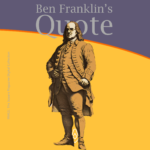 Early to bed and early to rise, makes a man healthy, wealthy, and wise. The quote is a simple rhyme that conveys a powerful message about the benefits of good habits and discipline. At its core, the quote is about the importance of creating a daily routine that includes adequate sleep and early mornings. |
 Don't judge of men's wealth or piety, by their Sunday appearances. This quote is a reminder that outward appearances can often be deceiving and that we should not make assumptions about someone based solely on what we see. |
 In a magical kingdom, wise old Ben teaches young Kia about the dangers of choosing friends too quickly. "Be slow in choosing a friend, slower in changing." It is an exploration of the deliberate care we must take in forging bonds that are intended not just for the sunny days but to weather the storms as well. |
 In a magical kingdom, wise old Ben teaches young Kia about the dangers of flatterers, using the tale of hero Gustaf's downfall due to "yes-men." The story emphasizes the value of honest feedback over constant agreement, urging leaders to seek truth over mere affirmation. Beware the sycophant's allure. |
 Fools need advice most, but wise men only are the better for it. This quote suggests that while everyone can benefit from advice, it is only those who possess wisdom who can truly understand and appreciate its value. |
 Be at war with your vices, at peace with your neighbours. - This quote suggests that we should constantly strive to improve ourselves and overcome our own weaknesses and bad habits, while also maintaining a peaceful and harmonious relationship with those around us. |
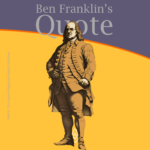 A soft tongue may strike hard - This quote is suggesting that even though someone may speak in a gentle or kind manner, their words can still have a strong impact. It's similar to the idea of a "silent but deadly" weapon. |
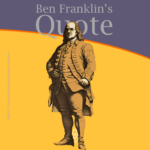 "A man in a passion rides a mad horse" suggests that when a person is controlled by their emotions, they can act recklessly and make poor decisions, similar to how a rider on a mad horse is out of control and can lead to danger. |
 “A child thinks 20 shillings and 20 years can scarce ever be spent” quote suggests that a child has an innocent and optimistic view of the future, believing that time and money are abundant and will never run out. The child may believe that 20 shillings, which is a small sum of money, is enough to last a lifetime and that 20 years, which may seem like a long time to a child, will never be over. |
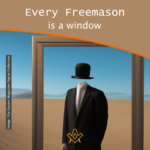 A short story why Every Freemason is a window through which other will see and decide from the experience what will be their opinion of Freemasonry |
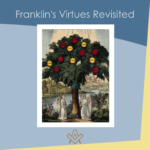 Franklin's Virtues Revisited For Today's Mason How are the virtues and the pursuit of self-improvement and knowledge as pertinent for today's Mason, as they were for Benjamin Franklin. |
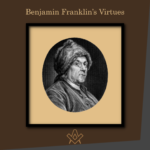 Benjamin Franklin’s Virtues, Freemasonry, and Jewish Practice and Discover his thirteen behavioural traits |
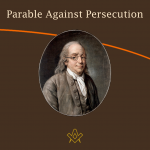 According to Benjamin Franklin’s letters, he took the inspiration for two of his parables “from an ancient Jewish tradition”. |
Recent Articles: masonic history
 Protestantism and Masonic Influence in Brazil Discover the untold story of how Freemasons helped Southern Americans immigrate to Brazil post-Civil War, fostering economic and educational growth in Santa Bárbara d’Oeste and Americana. Learn about their pivotal role in establishing Protestant churches and ensuring the secularity of the Brazilian State amidst a Catholic-dominated society. |
 Explore the proper use of the sacred word in Brazilian Freemasonry through an analysis of Masonic literature and Bible translations. Uncover the errors in pronunciation and the need for corrections to maintain liturgical coherence in rituals. Discover insights on Masonry, rituals, and the Hebrew word Boaz. |
 Narratives of History |
 A Very Royal Sesquicentenary |
 Unveiling the Enigma: Discover the Royal Society's Legacy and its Impact on Science. Delve into the fascinating history of the Royal Society, the prestigious UK academy shaping scientific progress since 1660. Explore its pivotal role in advancing knowledge, fostering collaboration, and unlocking the secrets of the universe. Prepare to be amazed! |
 Knights Templar in Freemasonry Uncover the Mysteries of the Knights Templar in Freemasonry! Delve into the intriguing world where chivalry and symbolism intertwine. Discover the captivating rituals and ancient secrets behind the Knights Templar Masonic Orders. Explore the historical connection and delve into the enigmatic narratives that continue to fascinate enthusiasts today. Unveil the hidden truths now! |
 The Royal Arch stands as the rainbow of promise in the Ritual; it stands as the promise of the resurrection; of that which was lost and that it shall be recovered. The question arises as to whether the Master's Word was originally communicated in the Third Degree? On this point there is some diversity of opinion. Originally published in 1915, this insight into the Fourth Degree – the Holy Royal Arch – is as relevant today as it was over 100 years ago. |
 Unveiling the Mysteries of Druidism: Discover the Intriguing Connection with Freemasonry. Explore the ancient spiritual practice of Druidism and its fascinating ties to the enigmatic world of Freemasonry. Delve into the shared symbolism and rituals that have captivated minds for centuries. Unlock the secrets of these intertwined traditions today! |
 Uncover the legacy of freestone masons and their pivotal role in crafting medieval cathedrals. Discover the artistry behind their techniques, the hierarchy within their craft, and the enduring impact of their intricate carvings. A deep dive into the world of these master craftsmen awaits you! |
 Unearth the intriguing journey from Vincha Culture to Freemasonry. Discover how ancient building methods intertwine with modern Masonic philosophies. This exploration will shed light on the fascinating link between the Serbian term "shestarenye" and the symbolic significance of the compass in Freemasonry. |
 Freemasonry and the Illuminati Unravel the enigmatic world of Freemasonry and the Illuminati in our latest exposé. Dive into centuries-old mysteries, debunk conspiracy theories, and discover the truth behind these elusive societies. Are they puppet masters or mere myths? Join us as we dissect history and fact from fiction. |
 The Île des Templiers, or “Island of the Templars” lies within a leafy park in Paris. The execution site of Jacques du Molay, the last Grand Master of the Knights’ Templar bears a plaque with the epitaph ‘A cet endroit / Jacques de Molay / Dernier grand maître / de l'ordre du temple / a été brûlé le 18 Mars 1314’ (‘In this location / Jacques de Molay / Last grand master / of the order of the temple / was burned on 18 March 1314’) |
 Operative Progressions to Speculative Masonry Both Operative and Speculative Masonry are an important part of the modern fraternity of Freemasonry, which combines elements of both traditions. Today, Freemasonry is a fraternity that is open to men of good character, who are interested in personal development and in making a positive contribution to their communities. |
 General Regulations of a Free Mason, 1723 General Regulations of a Free Mason as contained in Anderson's Constitutions of the Freemasons, published 1723. the Regulations are of great historical interest. Compiled by George Payne, the second Grand Master of the Premier Grand Lodge of England, they were printed in 1722/3, thus published just over five years after the formation of the Grand Lodge 1717. |
 The Genesis of the 1723 Book of Constitutions 2023, marks the three hundredth anniversary of the publication of the first printed Book of Constitutions of the Grand Lodge formally established in London two years previously. This is an anniversary whose significance extends beyond freemasonry. A paper by Andrew Prescott |
 The Ritual of the Operative Free Masons - P3 Existing Operative Free Masons. The ritual I am about to refer, is that of "The Worshipful Society of Free Masons, Rough Masons, Wallers, Slaters, Paviors, Plaisterers, and Bricklayers." By Thomas Carr, M.D., P. M. Honorary Member of the Guild of Operative Free Masons |
 Liberté chérie was a Masonic Lodge founded in 1943 by Belgian Resistance fighters and other political prisoners at Esterwegen concentration camp. It was one of the few lodges of Freemasons founded within a Nazi concentration camp during the Second World War. |
 The Ritual of the Operative Free Masons - P2 If anyone doubts the fact that the formation of Speculative Free Masonry was due to and based upon Operative Free Masonry, it is quite easy to convince him of his error if he will only study the first Book of Constitutions. By Thomas Carr, M.D., P. M. Honorary Member of the Guild of Operative Free Masons |
 In 1881, Freemasonry rose from the ashes of a fire in the mining town of Kokomo, Summit County, Colorado. Corinthian Lodge No. 42, along with Kokomo, no longer exists but it holds the record of having been – at an elevation of 10,618 feet – the highest Masonic Lodge in the USA. |
 The Huguenots and Early Modern Freemasonry The Huguenots influence in the development of early modern Freemasonry at the time of the formation of the Grand Lodge in London around 1717 / 1723. |
 November is a month of reflection – perhaps due to the fact that we are getting close to the years' end – but also because Remembrance / Armistice Day (11 November) is a significant date in most countries' diaries. |
 Speculative Freemasonry, as practise by Grand Lodge of England, was officially born just over three hundred years ago, is today an international organisation, counting over six million members. It has been subjected to persecution, suppression, and abolition throughout its history. In its infancy, only a couple of decades after its official birth, it had already become a target. |
 The Ritual of the Operative Free Masons - P1 The original paper was written, first, to prove that Speculative Free Masonry was derived from Operative Free Masonry; second, to give some account of the Operative Free Masons, of their Ritual, and of their customs. By Thomas Carr, M.D., P. M. Honorary Member of the Guild of Operative Free Masons |
 American Fraternalism in the 19th and Early 20th Centuries The late 19th and early 20th centuries in the United States has been called the "Golden Age of Fraternalism." How did this come about and why was the idea of joining a fraternal organization so popular? We will explore this question and examine the regalia used by many fraternal organizations in this period. |
 Societas Draconistarum, meaning "Society of the Dragonists"– was a chivalric Order for selected nobility, founded in 1408 by Sigismund von Luxembourg, who through marriage became the King of Hungary (1387–1437) and later Holy Roman Emperor. The Order was fashioned after the military orders of the Crusades, requiring its initiates to defend the cross and fight the enemies of Christianity, in particular the Ottoman Empire. |
 The Perjured Free Mason Detected Was Samuel Prichard a perjured individual, or simply a misguided Freemason? Prichard's book "Free Masonry Dissected" published in 1730, is now used by many Masonic historians as a source of reference with regards to the introduction of the third degree into the Craft. But at the time it was published in 1730, it was not so well received by members of the Grand Lodge of England. |
 17th century and the Holy Royal Arch This article focuses on a period of transition between a point in time when we can safely and historically identify the first formation of what could be called as the ‘Royal Arch’ and the historical events that have preceded it. |
 Most Freemasons have heard the terms 'Operative' and 'Speculative' Masons, and this article helps to understand the difference: |
 Roberts' Constitutions of Freemasonry 1722 Published a year before Anderson's Constitutions, The Old Constitutions Belonging to the Ancient and Honourable SOCIETY OF Free and Accepted MASONS. Originally printed in London England; Sold by J. Roberts, in Warwick-Lane, MDCCXXII.(1722) |
 From 'Songs of religion and life', 1876 by John Stuart Blackie (1809-1895) |
 On the Antiquity of Masonic Symbolism Is the Symbolism of Masonry an inheritance derived from the old Masons who flourished before the era of the Grand Lodges (1717); or has it been borrowed from the Rosicrucians or others, after 1717? |
 Mason's Marks – from Egypt to Europe? Mason's marks have been a source of intrigue, not only to Freemasons but to historians and archaeologists. The use of simple pictograms have been employed for millennia by artisans to identify their work. But where did they originate and why? |
 The White House Foundation Stones Further to the articles in our series on the history of the stone masons, we have a rather intriguing addition. During the 1950's renovation of the White House, President Truman retrieved more than 100 stone blocks with stonemasons marks. |
 What the Goose and Gridiron Tavern is in the ancient annals of London Freemasonry, The Green Dragon Tavern is to the memories of the Free-mason, of Boston and New England. |
 Auschwitz concentration camp: video photo article taken in 2013 |
 There are two things of importance happening this day - 27 January |
 Two approaches regarding the understanding of Freemasonry |
 Masonic Research in England c1930 An article which appeared in an American Masonic magazine, c1930 and which was reproduced in England, provoking a little controversy. |
 Masonic bookplates the ‘Brethren’s spiritual coats of arms and marks’ |
 The Unlawful Societies Act of 1799 Rebellious Freemasons and the 21st century |
 In 1912, Sarah Dowd of Dromore, Ireland, found a Masonic jewel dated 1517 - a date two hundred years before the establishment of Grand Lodge... |
 Freemasonry and Fascist Regime Interesting speech by the famous historian Prof. Aldo A. Mola, who links the fascist regime with the Masonic Associations. |
 Was famous Russian poet Alexander Pushkin a Freemason? And if so, was he a member of the lodge ‘for which all the lodges in Russia were destroyed’? |
 The Importance of Masonic Research Why is accurate - or authentic - Masonic research so important? The importance of making a daily advancement in Masonic knowledge is something that The Square is passionate about promoting. |
 The Antient Noble Order of the Gormogons had a brief existence in the eighteenth century; they left few records or accomplishments, |
masonic knowledge
to be a better citizen of the world
share the square with two brothers

click image to open email app on mobile device

